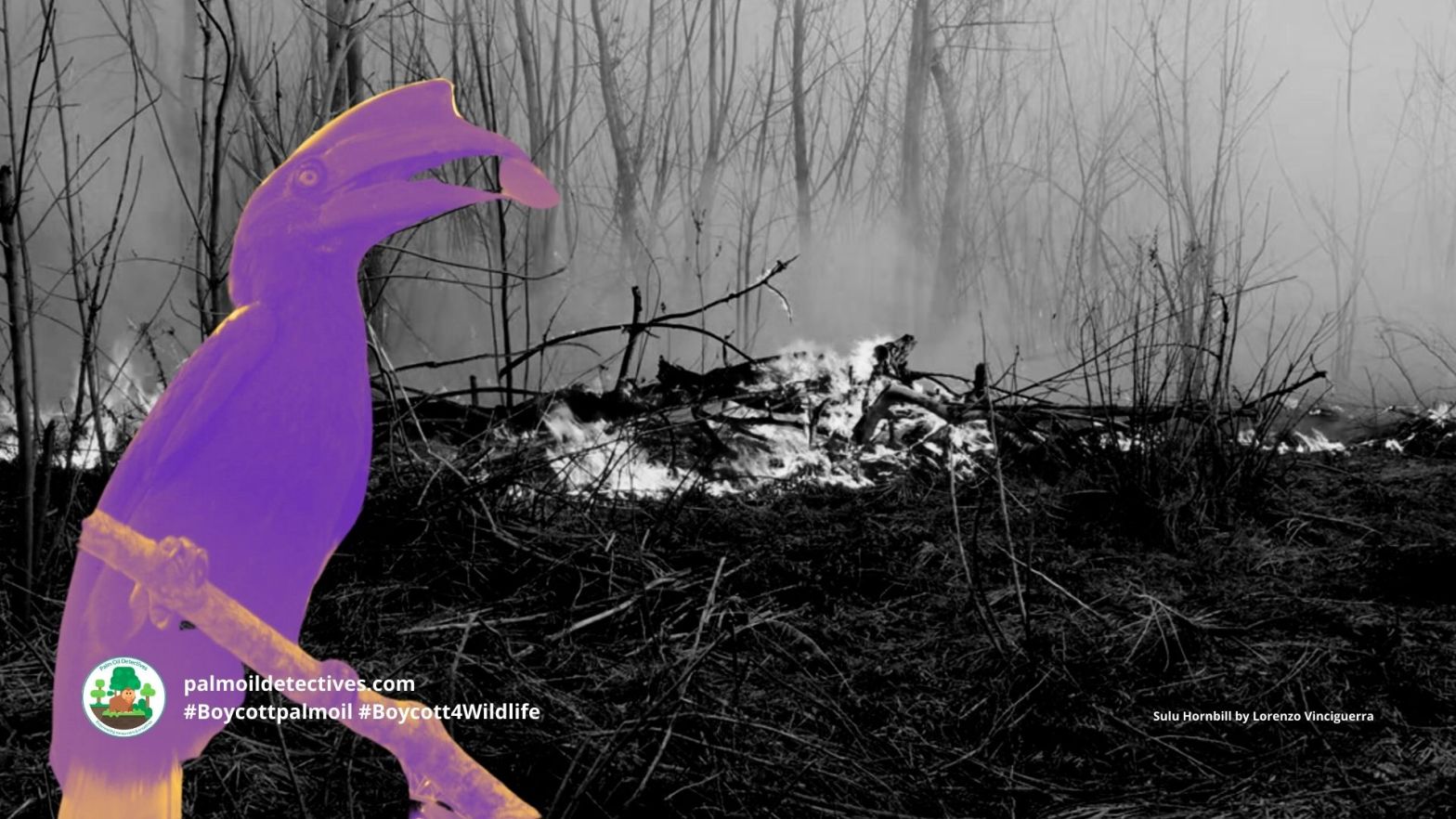Sulu Hornbill Anthracoceros montani
Critically Endangered
Extant (resident)
Philippines
The Sulu Hornbill is one of the rarest birds in the world. They are large and almost entirely black except for a white tail, with a thick black bill, a black casque, and black skin around the eye. Males have pale eyes, females have brown eyes and a smaller casque. These striking birds are native to the Sulu Islands, possibly now only found on Tawi-Tawi due to hunting and palm oil deforestation throughout their range. In 2018 there was only a few dozen left. Help their survival and #Boycottpalmoil #Boycott4Wildlife
Critically endangered Sulu #Hornbills are one of the rarest birds in the world – hunted for their casques and close to #extinction from #palmoil #deforestation. Help them every time you shop and #Boycottpalmoil #Boycott4Wildlife
Tweet
Fight for the rarest black beauty of them all – the critically endangered Sulu Hornbill of the #Philippines deserves to be saved, use your wallet and #Boycottpalmoil #Boycott4Wildlife
Tweet
The Sulu hornbill — “tawsi” in the local language — is endemic to the Philippines, occurring only on islands in the Sulu Archipelago between Mindanao and Borneo. It is the sole member of the Bucerotidae family within its area and was described as widespread and abundant at the time of its discovery in 1880. Since then, the population has crashed.
Today, the only viable breeding population of the Sulu hornbill known to exist is found on the small island of Tawi-Tawi, where a mere 100 square kilometers (close to 25,000 acres) of suitable forest remains, according to the IUCN. The total global population is estimated to be about 40 individuals.
Mongabay
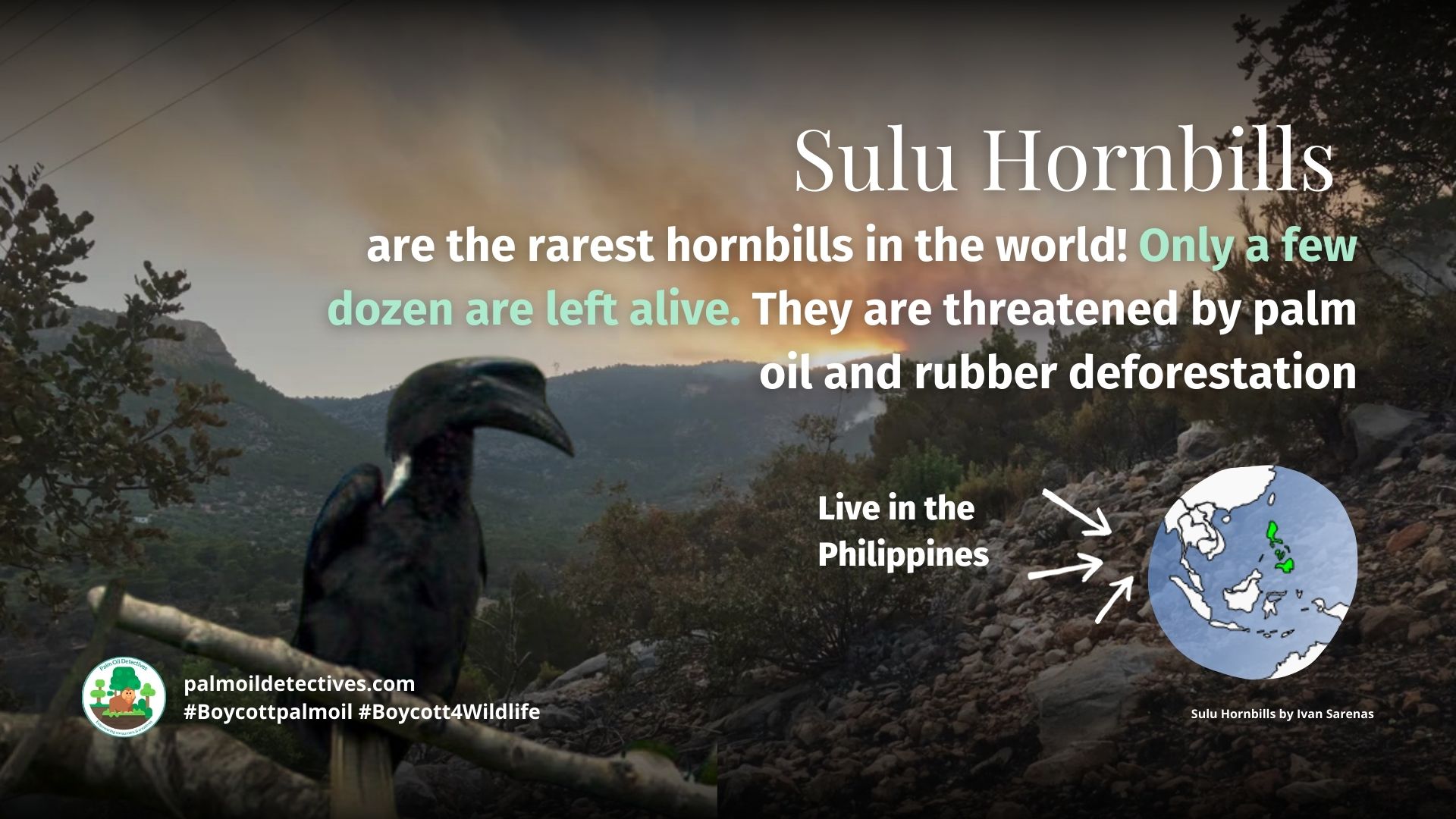
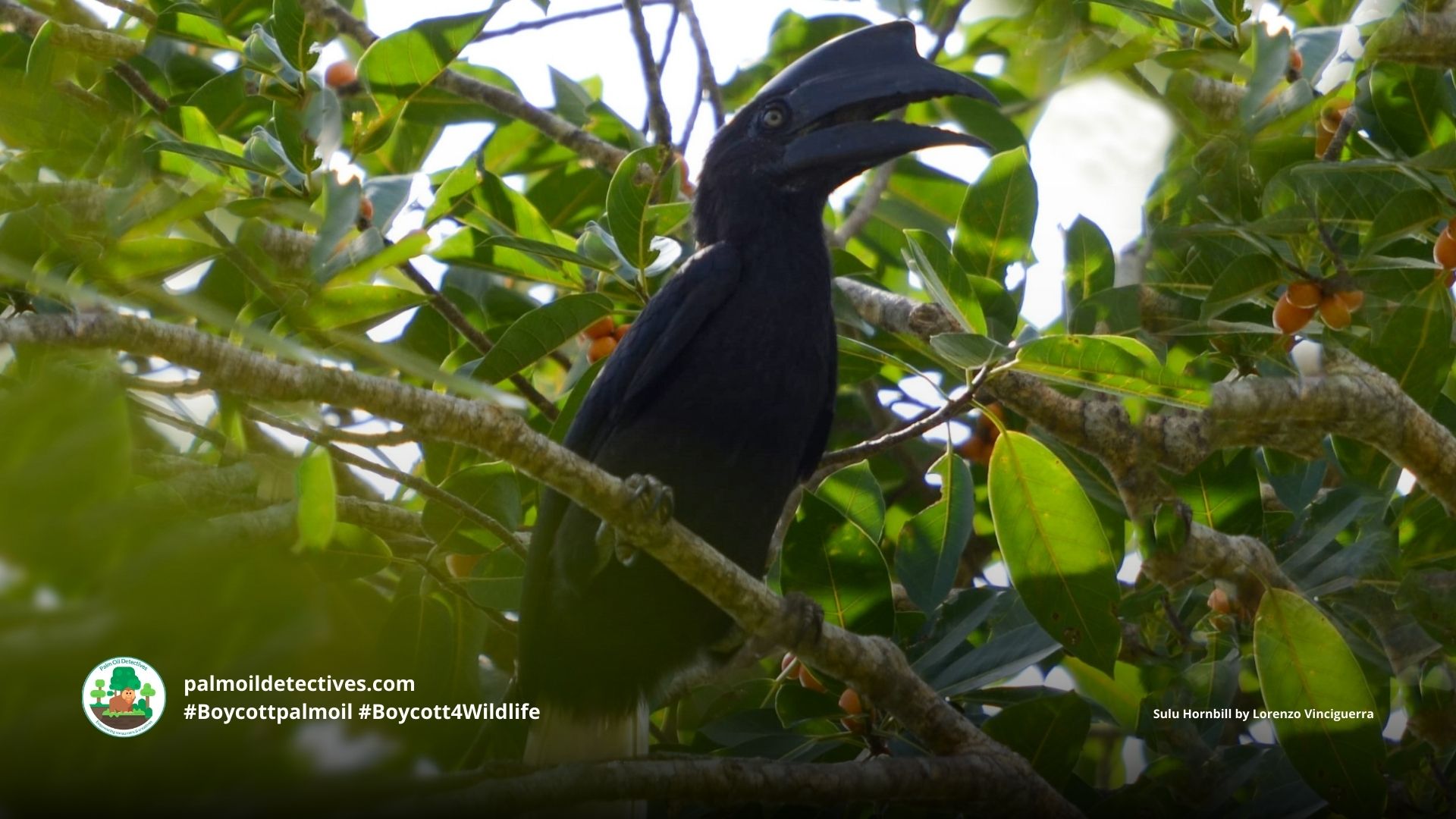
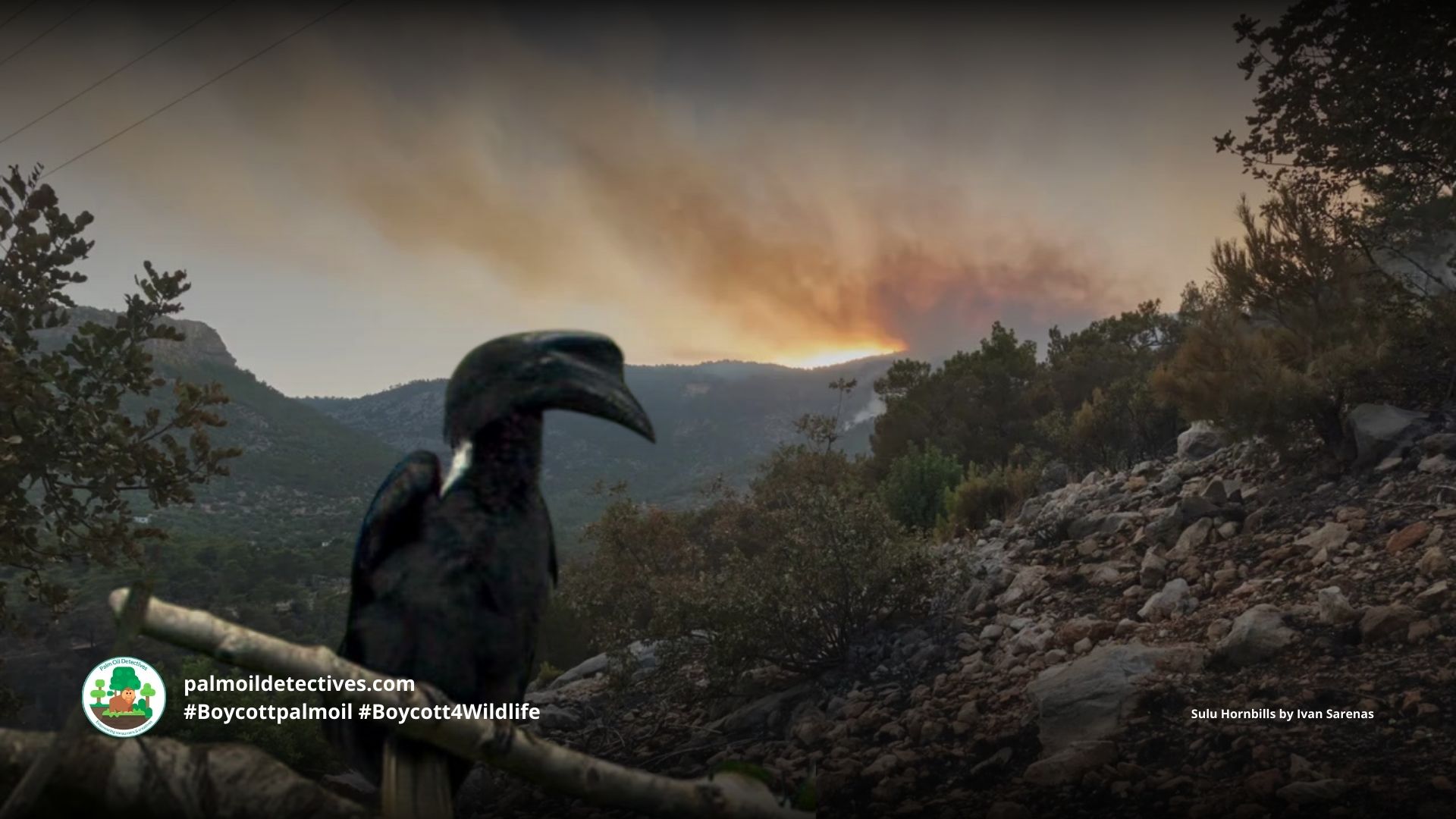

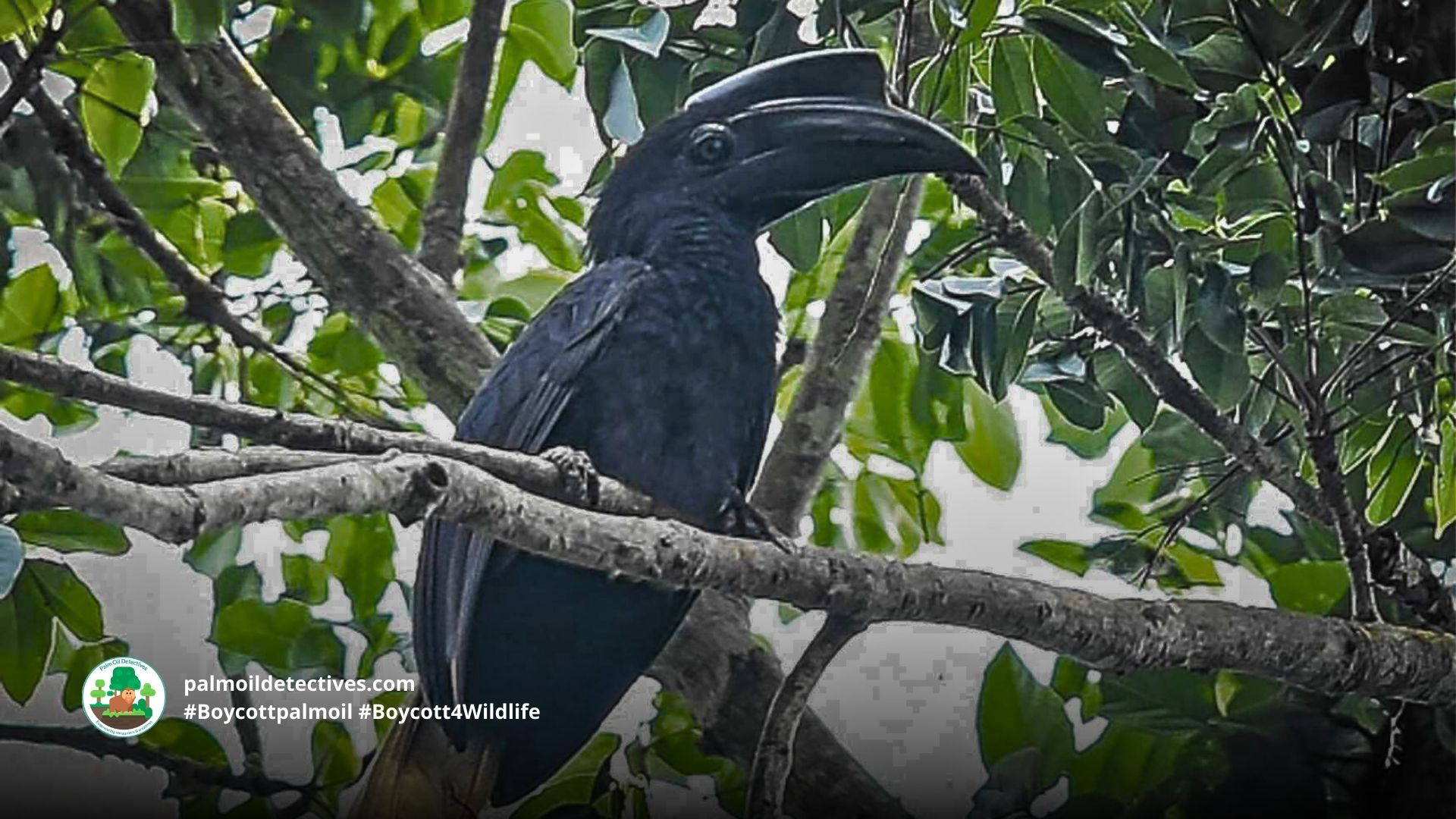
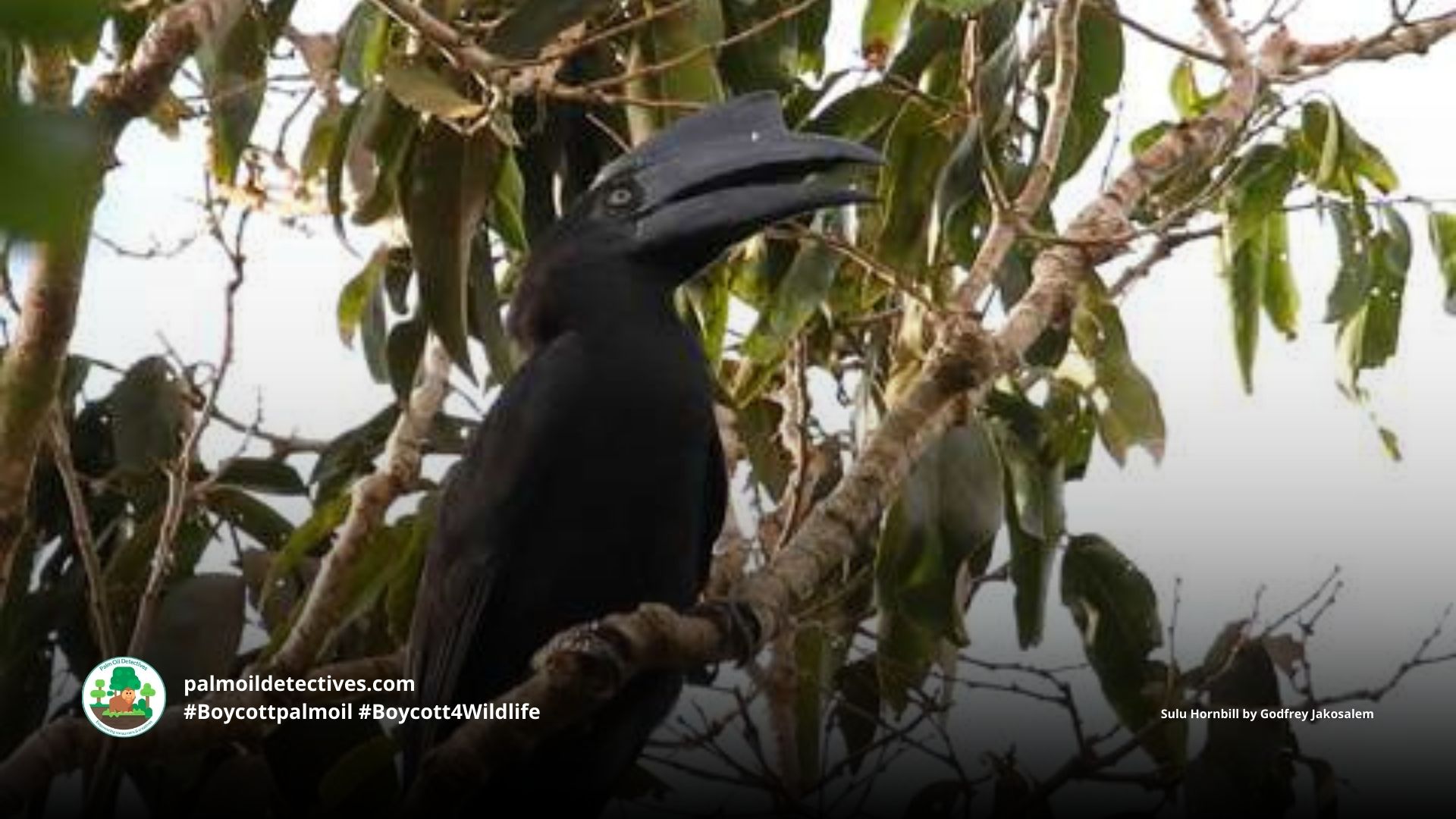
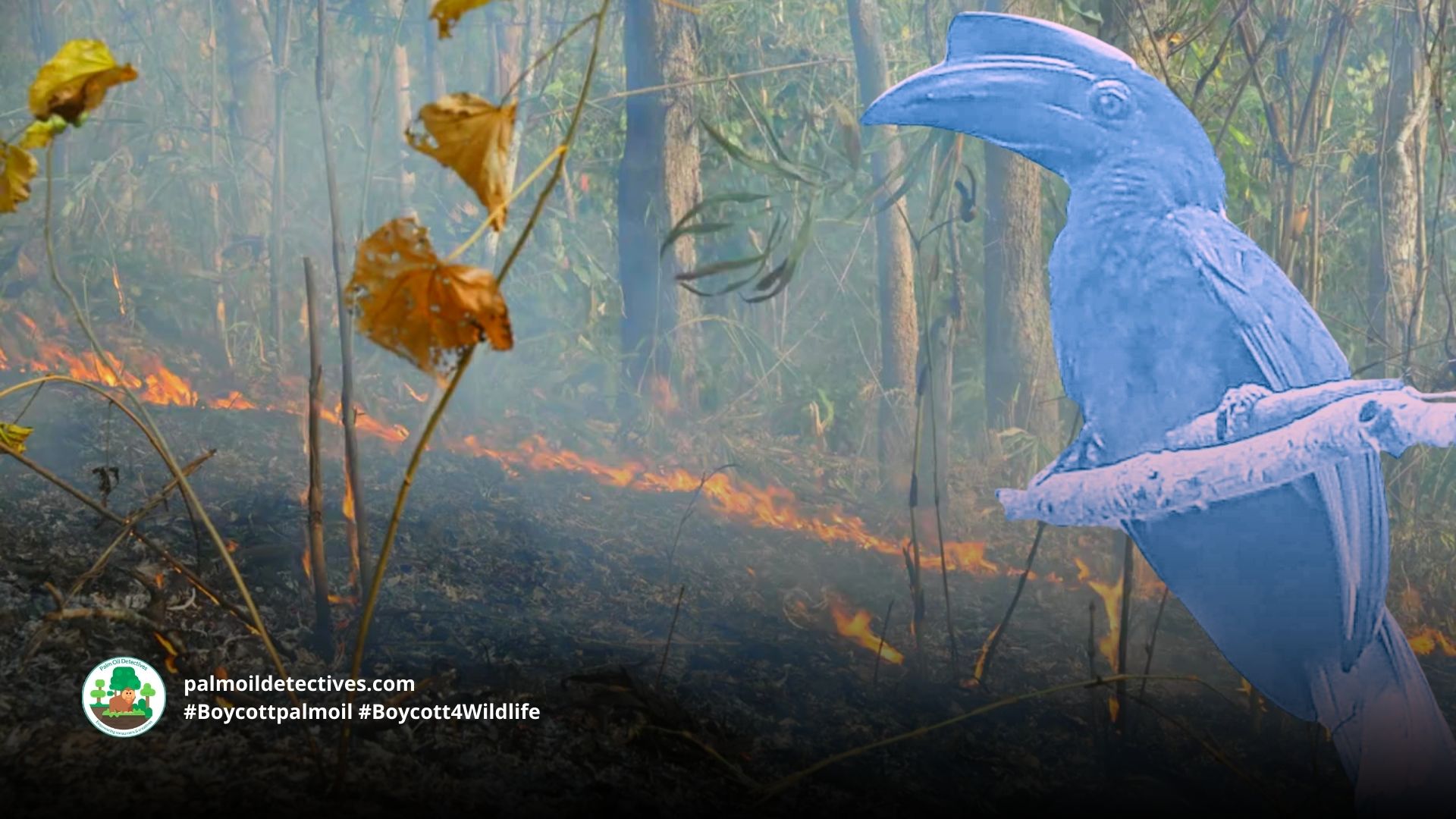

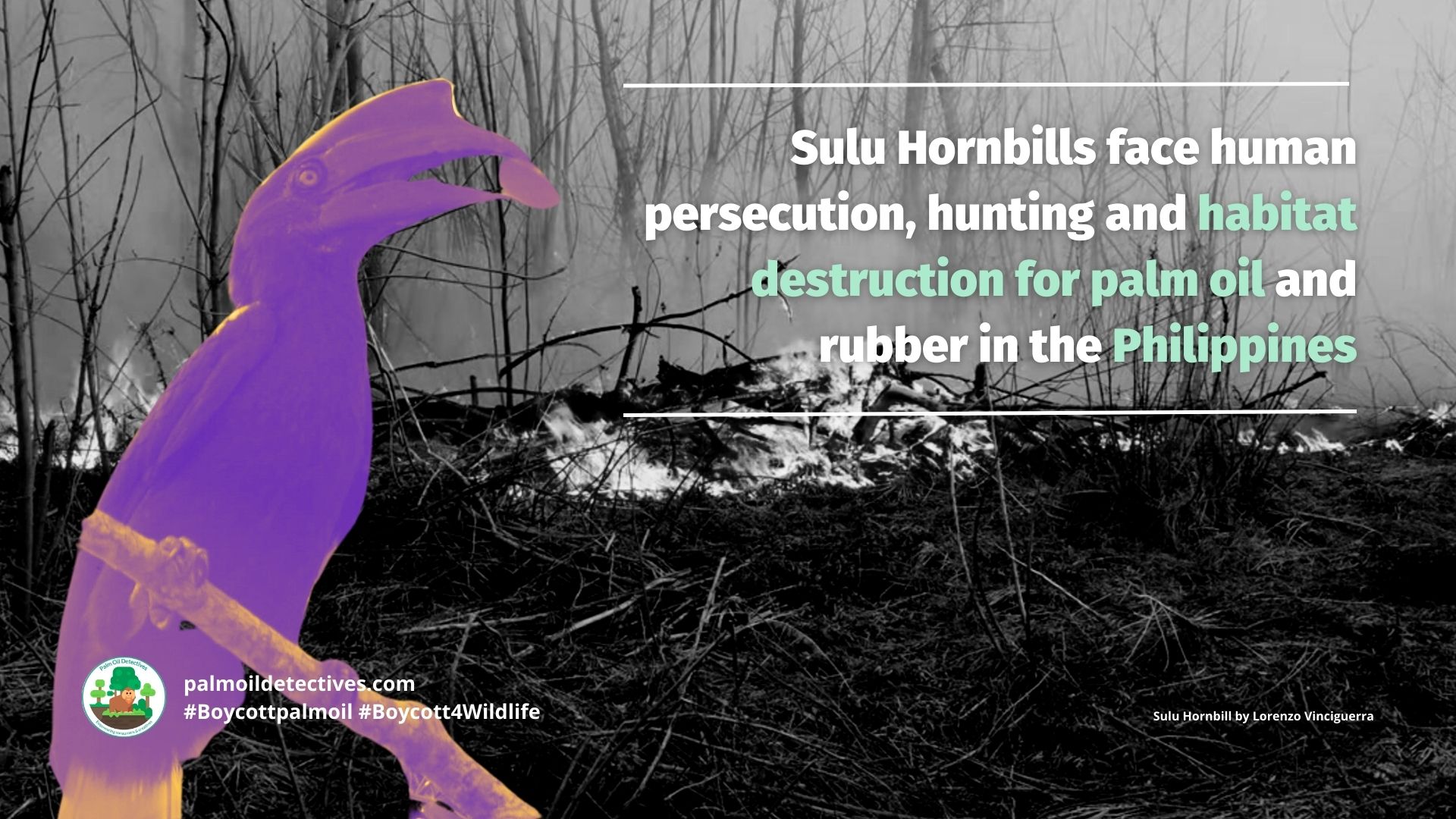
Threats
In 2019 it was reported that only 27 mature individual hornbills are still believed to be alive in the wild making it one of the most endangered animals in the world.[5]
Wikipedia
- Large-scale deforestation: of their habitats on Sulu, Tawi-Tawi and Sanga-Sanga.
- Deforestation for palm oil
- Deforestation for rubber
- Mining activities in the areas where they live.
- Human persecution: for target practice, especially due to high gun ownership in the past.
- Hunting: the harvesting of young hornbills for food.
- Pet trade: the collection of the species for trade.]
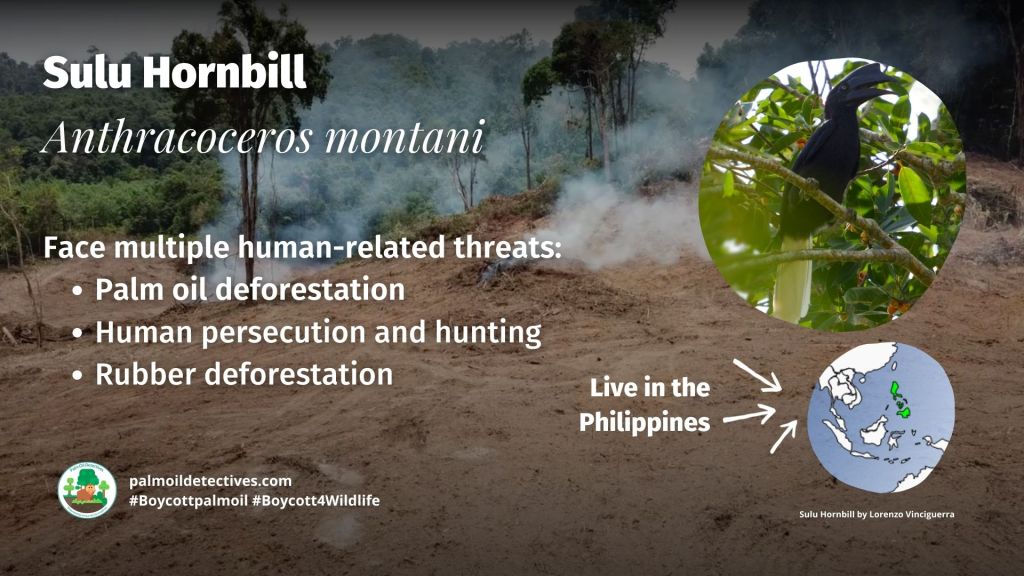
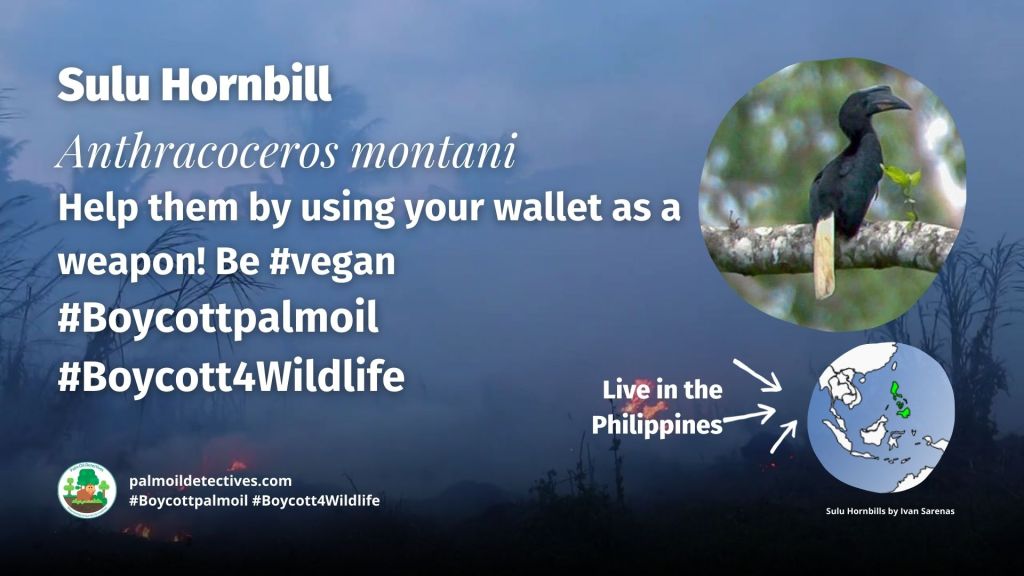


Habitat
Sulu Hornbill live in primary dipterocarp forests, often on mountain slopes, possibly due to forest loss elsewhere. Occasionally, they travel over a kilometer to visit isolated fruiting trees. They need large trees for nesting. Their diet mainly consists of fruit, but they sometimes eat small lizards and insects.
Diet
Their diet mainly includes fruit, occasionally they may also eat small lizards and insects.
Support Sulu Hornbills by going vegan and boycotting palm oil in the supermarket, it’s the #Boycott4Wildlife
Support the conservation of this species
This animal has no protections in place. Read about other forgotten species here. Create art to support this forgotten animal or raise awareness about them by sharing this post and using the #Boycottpalmoil #Boycott4Wildlife hashtags on social media. Also you can boycott palm oil in the supermarket.
Further Information
BirdLife International. 2020. Anthracoceros montani. The IUCN Red List of Threatened Species 2020: e.T22682447A178062684. https://dx.doi.org/10.2305/IUCN.UK.2020-3.RLTS.T22682447A178062684.en. Accessed on 23 February 2023.
Sulu hornbill Wikipedia article – https://en.wikipedia.org/wiki/Sulu_hornbill
Sulu hornbill on Animalia.bio – https://animalia.bio/sulu-hornbill
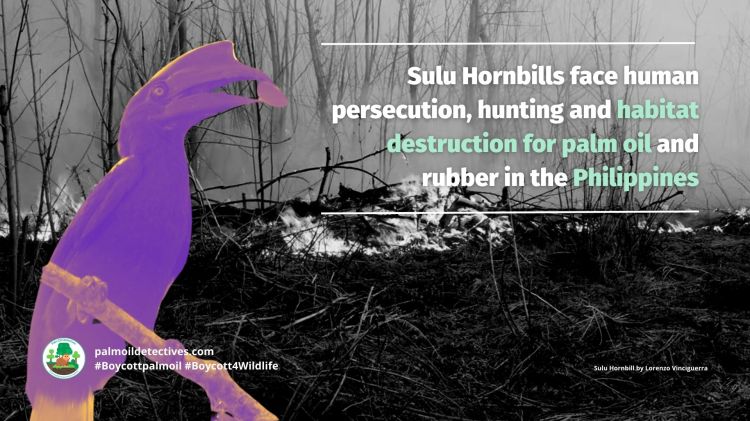

How can I help the #Boycott4Wildlife?
Contribute in five ways
1. Join the #Boycott4Wildlife on social media and subscribe to stay in the loop: Share posts from this website to your own network on Twitter, Mastadon, Instagram, Facebook and Youtube using the hashtags #Boycottpalmoil #Boycott4Wildlife.
2. Contribute stories: Academics, conservationists, scientists, indigenous rights advocates and animal rights advocates working to expose the corruption of the palm oil industry or to save animals can contribute stories to the website.
3. Supermarket sleuthing: Next time you’re in the supermarket, take photos of products containing palm oil. Share these to social media along with the hashtags to call out the greenwashing and ecocide of the brands who use palm oil. You can also take photos of palm oil free products and congratulate brands when they go palm oil free.
4. Take to the streets: Get in touch with Palm Oil Detectives to find out more.
5. Donate: Make a one-off or monthly donation to Palm Oil Detectives as a way of saying thank you and to help pay for ongoing running costs of the website and social media campaigns. Donate here

